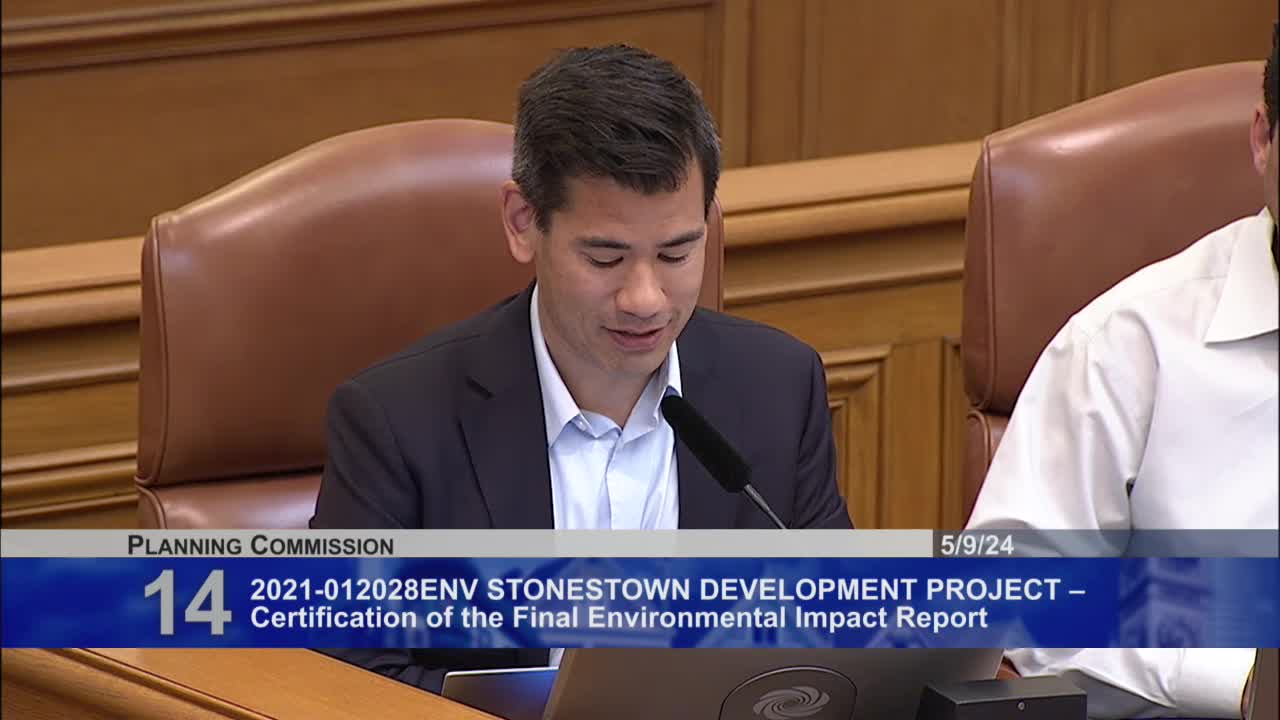Commissioner Cherry details affordable housing requirements and development plans at Stonestown Mall
May 09, 2024 | San Francisco City, San Francisco County, California

This article was created by AI summarizing key points discussed. AI makes mistakes, so for full details and context, please refer to the video of the full meeting. Please report any errors so we can fix them. Report an error »

In a recent San Francisco government meeting, city officials engaged in a detailed discussion about the future of affordable housing and urban development, focusing on a significant project that aims to transform the Stonestown area. The atmosphere was charged with anticipation as commissioners sought clarity on the affordable housing requirements outlined in the development agreement.
Commissioner Jonathan Cherry from the Office of Economic and Workforce Development clarified that the project mandates a diverse range of affordable housing options. Rental units must cater to households earning no more than 100% of the area median income (AMI), while ownership units can extend to 110% AMI. This flexibility is designed to accommodate various income levels, ensuring that the housing plan remains inclusive. However, concerns were raised about maintaining a balance within this range to avoid an over-concentration of higher-income units.
The conversation also touched on the importance of keeping pedestrian pathways open through the Stonestown Mall, with some commissioners advocating for extended hours to enhance accessibility. The mall's layout has been a point of contention, as navigating through its extensive parking lots can be cumbersome for residents.
As the meeting progressed, the commissioners expressed their support for the project, highlighting its potential to revitalize the area by converting 27 acres of parking lots into vibrant community spaces. The proposal includes over 400 new housing units, childcare facilities, and senior services, all aimed at fostering a sense of community.
Sustainability was another key theme, with discussions on enhancing bike infrastructure and ensuring transit accessibility. The city plans to implement separated bike lanes and improve public transport options, addressing current challenges faced by commuters.
Overall, the meeting underscored a commitment to responsible growth in San Francisco, balancing the need for affordable housing with the desire for a lively, interconnected community. As the project moves forward, city officials remain optimistic about its potential to meet the diverse needs of residents while enhancing the urban landscape.
Commissioner Jonathan Cherry from the Office of Economic and Workforce Development clarified that the project mandates a diverse range of affordable housing options. Rental units must cater to households earning no more than 100% of the area median income (AMI), while ownership units can extend to 110% AMI. This flexibility is designed to accommodate various income levels, ensuring that the housing plan remains inclusive. However, concerns were raised about maintaining a balance within this range to avoid an over-concentration of higher-income units.
The conversation also touched on the importance of keeping pedestrian pathways open through the Stonestown Mall, with some commissioners advocating for extended hours to enhance accessibility. The mall's layout has been a point of contention, as navigating through its extensive parking lots can be cumbersome for residents.
As the meeting progressed, the commissioners expressed their support for the project, highlighting its potential to revitalize the area by converting 27 acres of parking lots into vibrant community spaces. The proposal includes over 400 new housing units, childcare facilities, and senior services, all aimed at fostering a sense of community.
Sustainability was another key theme, with discussions on enhancing bike infrastructure and ensuring transit accessibility. The city plans to implement separated bike lanes and improve public transport options, addressing current challenges faced by commuters.
Overall, the meeting underscored a commitment to responsible growth in San Francisco, balancing the need for affordable housing with the desire for a lively, interconnected community. As the project moves forward, city officials remain optimistic about its potential to meet the diverse needs of residents while enhancing the urban landscape.
View full meeting
This article is based on a recent meeting—watch the full video and explore the complete transcript for deeper insights into the discussion.
View full meeting
